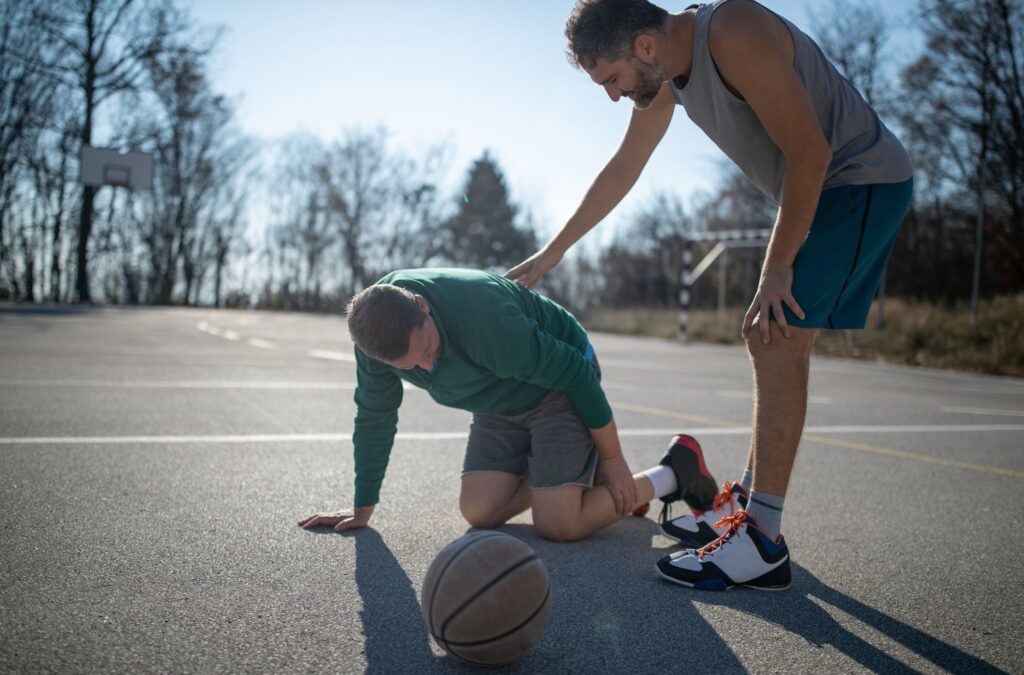The Worst Basketball Injuries You Could Have Avoided If You Followed These Steps

For many young athletes, basketball is not just a sport; it’s a way of life. The thrill of the game, the time spent with teammates, and the rush of competition make it an irresistible passion.
But with great passion comes great responsibility, especially when it comes to protecting your body from the worst basketball injuries. If you’re one of those athletes who has experienced a basketball injury in the past and fears another one could knock you out of shape or off-season, this blog is for you.
Read this blog to learn about the most common basketball injuries and, more importantly, the steps you can take to avoid them.
Our goal is to help you stay in the game, keep performing at your best, and enjoy the sport you love without the fear of getting injured.
You don’t deserve to be side-lined again.
Sprained Ankles
Sprained ankles are one of the most common basketball injuries. They occur when the ligaments supporting your ankle get stretched or torn. To avoid this injury:
- Wear high-quality basketball shoes with good ankle support.
- Regularly practice balance and proprioception exercises to strengthen your ankle muscles.
- Learn proper landing techniques to reduce the risk of rolling your ankle.
Knee Injuries
Knee injuries, such as ACL tears and meniscus tears, can be devastating for any basketball player. They’re probably the worst basketball injuries you can get. To prevent these injuries:
- Focus on lower body strength training to build strong quadriceps, hamstrings, and calf muscles.
- Work on your jumping and landing technique to reduce the stress on your knees.
- Use knee braces or sleeves for added support if needed.
Stress Fractures
Stress fractures are tiny cracks in bones caused by repetitive stress. They often occur in the lower legs or feet. To steer clear of stress fractures:
- Maintain a balanced diet rich in calcium and vitamin D to keep your bones strong.
- Avoid overtraining and ensure you get enough rest between practices and games.
- Pay attention to any persistent pain in your lower extremities and seek medical advice if needed.
Tendonitis
Tendonitis is the inflammation of tendons, commonly seen in the Achilles tendon and the patellar tendon. To prevent tendonitis:
- Warm up properly before every practice or game to prepare your tendons for the demands of the sport.
- Incorporate eccentric strengthening exercises into your routine to improve tendon resilience.
- Listen to your body and rest when you feel the early signs of tendonitis.
Concussions
While not an injury you can avoid through physical conditioning, you can take steps to minimize the risk of concussions:
- Always wear a properly fitted, shock-absorbing mouthguard.
- Learn proper techniques for taking contact, including how to protect your head.
- Be aware of your surroundings on the court and avoid collisions when possible.
Take The Next Step To Avoid The Worst Basketball Injuries
Basketball is a sport that demands dedication and commitment, but it shouldn’t come at the cost of your health and well-being.
By following the steps outlined above and taking proactive measures to prevent common basketball injuries, you can continue playing the game you love with confidence.
Remember, injuries can happen, so if you want to make sure you’re implementing the best injury prevention practises, reach out to us at Power Physical Therapy & Sports Performance for a Sports Pain and Performance Assessment.
Our expert team is here to support your recovery and help you stay in the game. Keep playing smart and safe, and enjoy every moment on the basketball court!
Ready to kickstart your recovery journey? Let’s begin or call us at (714)-557-2100.
You can also download our special advice report for more tips on recovery.
More Free Advice
Read our blog – Is There Any Chance I Will Be Able To Fix My Knee Pain & Return To The Sports I Love and How To Tell If Your Pain Symptoms Are The Result Of A Sprains Or a Strains
Follow us on social media – Like Us On Facebook
